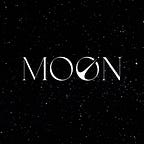Despite being formed from regular impacts upon the Moon’s surface, craters offer our Moonlanders plenty of opportunities to survive the Moon’s harsh environment.
Craters are one of the most common sights on solid planets and moons. Due to the Moon’s lack of atmosphere, there is nothing to break up asteroids or meteoroids that are on course to collide with the lunar surface.
The Earth has also been victim to plenty of meteor strikes. In fact, they only appear harder to find because of erosion and weathering to its surface. In addition to a lack of atmosphere, the Moon also lacks liquid water and tectonic plates. It’s the combination of these three forces that have eroded all but the most recent impacts on the Earth’s surface.
One of Earth’s most famous craters is found in Arizona, USA. The ‘Barringer Crater’ was formed 50 thousand years ago and remains an impressive sight to this day because it has experienced very little erosion.
In comparison, over 99% of the Moon’s surface is over 3 billion years old. That’s a long time to collect a surface full of craters!
So how will craters support life in Moon Metaverse?
They Contain Water
Although there is no atmosphere on the Moon, scientists have observed definitive evidence of ice water on the Moon’s surface in the darkest and coldest parts of lunar craters. Light from the crater’s high peaks could be channeled directly towards the ice where it would be heated and turned into vapor. This presents a fantastic opportunity for our Moonlanders to extract this essential resource.
They Offer Safety
The Moon’s surface is full of craters of various sizes — from microscopic to gigantic. NASA considers large moon craters as one of the safest places for colonization. This is because it provides a safe place for Moonlanders to protect themselves from the dangers of asteroids and radiation. Moonlanders will be able to choose from the many craters and build their own home in a safe environment.
They Contain Rare Resources
Lastly, Moon craters are full of essential, rare, and valuable minerals such as olivine — a rock-forming mineral that is commonly found on Earth but rarely on the Moon. As its availability is very limited, it will be an especially valuable resource for the production of metals and its high value will ensure it is easily tradable. Olivine can be found in the rings around big impact craters where the lunar crust is relatively thin and its interior is closest to the surface.
If the Moonlanders are able to utilize the Moon’s craters to their full potential, they will go a long way to helping create mankind’s first long-term home beyond the confines of planet Earth.
Until next time, learn more about the development of Moon, or register your interest in our lunar land sale which is coming soon!
Moon is a brand new Metaverse built on Binance Smart Chain. It is inspired by lunar exploration and gives players opportunities to acquire NFT land plots, develop a new world, drive its economy and uncover the mysteries of the Moon’s dark side. Join Moon and start earning real-life revenue.
